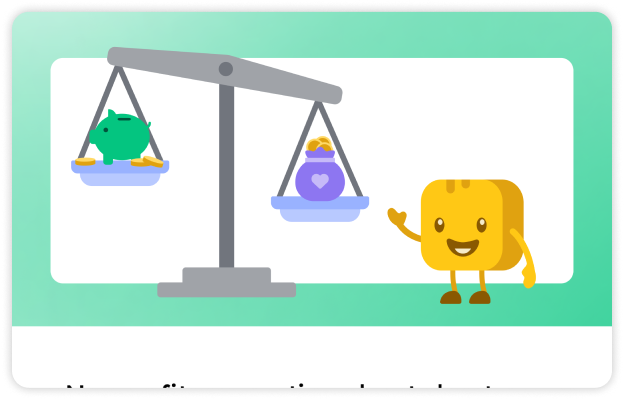Table of contents
Table of contents
You probably didn’t join your nonprofit organization because you love crunching numbers. We get it—you’re passionate about your mission, not the minutiae of accounting. But there are still nonprofit accounting standards you must follow to stay compliant and earn your donors’ trust.
This nonprofit accounting cheat sheet cuts through the complexity, giving you exactly what you need to stay organized and compliant without getting lost in the details. And to make it even easier, we’ve included a free downloadable checklist you can follow step-by-step—from setting up your chart of accounts to preparing reports that will impress your board members.
👋 Disclaimer: This content is for informational purposes only and does not constitute financial advice. Please consult a qualified nonprofit accountant or financial professional for guidance specific to your organization.
Key takeaways
- Understand fund accounting: Record restricted, temporarily restricted, and unrestricted funds based on donor intent to maintain transparency and compliance.
- Select the right accounting method: Cash accounting is simpler for small teams, while accrual accounting is required for GAAP compliance and often preferred by grant funders..
- Set up a chart of accounts: Organize transactions into clear categories (assets, liabilities, net assets, revenue, expenses) for accurate financial tracking and reporting.
- Implement internal controls: Assign board oversight, segregate duties, protect assets, and define reimbursement policies to prevent fraud and ensure compliance.
- Fulfill compliance and reporting requirements: File IRS Form 990 annually, prepare monthly/quarterly financial reports, and maintain organized documentation for audits or grants.
- Leverage nonprofit accounting tools: Integrate a fundraising platform like Givebutter with your nonprofit accounting software (including QuickBooks, Sage, and Xero) to streamline donation tracking, reduce manual data entry, and keep your fundraising and finances in sync.
Download your free nonprofit accounting cheat sheet
Running a nonprofit is hard enough—so we created a free checklist to make your accounting easier. This one-pager walks you through the essential steps: setting up your chart of accounts, tracking restricted funds, staying compliant, and reporting to your board.
Use it to stay organized, confident, and audit-ready—whether you're just getting started or streamlining your current process.
The sections below expand on each step in the checklist to help you put them into practice.
How nonprofit accounting works
Accountability is at the core of financial accounting for nonprofits. Donors and stakeholders want to know that the money coming into your nonprofit is being used to advance your mission.
Learning the foundations of nonprofit accounting will help keep your organization transparent, accountable, and organized.
Fund accounting for nonprofits 🤝
In the nonprofit world, every dollar has a job. That’s why nonprofits use fund accounting—a method that tracks how money is categorized and spent based on donor intent.
There are three main types of funds you’ll need to track:
- Restricted funds 🛠️ Donations that are earmarked for a specific project, program, or purpose
⚡ Example: A gift given to help renovate your animal shelter
- Temporarily restricted funds ⌛ These are similar to restricted funds, but the restriction is lifted after a set time or once the goal is met
⚡ Example: A grant you must use in the fiscal year it was awarded
- Unrestricted funds 🧡 General funds you’re free to use for any type of need or expense
⚡ Example: A donation from a local business with no strings attached
Choose your method: Cash vs. accrual accounting ⏰
When it comes to recognizing income and expenses, nonprofits have two main options: cash accounting and accrual accounting. The main difference between the two is the timing of when you recognize income and expenses.
Cash accounting: Records income and expenses when money actually changes hands
✅ Pro: Easier to learn and manage—ideal for small teams or early-stage nonprofits
✅ Pro: Gives a clear picture of your current cash flow
❌ Con: Doesn’t account for future obligations or income, so your overview may be limited
⚡ Example: A donor pledges $1K in December but pays in January. With cash accounting, you’d record the donation in January.
Accrual accounting: Records income and expenses when they’re earned or incurred, not when money is received or spent
✅ Pro: Paints a fuller picture of your financial position
✅ Pro: Preferred by Generally Accepted Accounting Principles (GAAP) and most grant funders
❌ Con: Can be more complex and may require professional help from a nonprofit accounting service
⚡ Example: That same $1K would be recorded in December, even if it’s paid later.
💡Pro tip: If you’re applying for large grants, preparing for an audit, or reporting for funders, accrual accounting is typically a better fit.
Getting started (even on a budget)
Nonprofit accounting can feel overwhelming—especially if you’re starting from scratch. Setting up a chart of accounts is a simple, actionable step you can take to lay the foundation for your accounting process. We’ll walk you through how to do this below.
Set up your chart of accounts (with sample line items)
A chart of accounts groups your transactions into clear categories so you can see where your money is coming from—and where it’s going.
Most nonprofits organize their accounts into five basic types:
- Assets 💰 Everything you own (e.g, bank balance, equipment)
- Net assets ⚖️ Assets minus liabilities
- Revenue 💸 Donations, grants, membership dues, or other funding
- Expenses 📋 Mission-related and administrative costs
- Liabilities 📉 Anything you owe (e.g., loans, deferred revenue)
💡 Pro tip: Assign each account type a number range (e.g., 1000s for assets, 3000s for revenue). This keeps everything organized as your accounting grows.
Prioritize clarity over complexity when building your chart of accounts—especially in the beginning.
Here is a sample chart of accounts for a small to mid-sized nonprofit:
Tools to make this easier
Spreadsheets are a great starting point. As your nonprofit grows, you can use affordable tools to simplify your accounting. Integrating your accounting software with a fundraising platform like Givebutter streamlines the process even further.
Givebutter offers a native QuickBooks Online integration (available with Givebutter Plus), and also connects with tools like Xero and Sage Intacct via Zapier—so your donation data flows automatically into your accounting software. These integrations enable you to track income by campaign, keep records clean, and spend less time reconciling.
How to stay compliant with a small team
You don’t need a large finance department to stay compliant—just a few smart systems. The steps below will help protect your nonprofit, prevent fraud, and build trust with funders and board members—even with a small team.
Implement internal controls
Internal controls are the policies and procedures that reduce risk and keep your nonprofit finances clean.
Here’s how your small team can implement these safeguards:
- Board oversight: Ensure someone on the board (such as the treasurer) regularly reviews financial reports.
- Protect assets: Create a system for depositing cash donations and store assets in a locked safe.
- Reimbursements & receipts: Establish a policy for expense reimbursements and reconcile credit card receipts monthly.
- Segregate duties: Divide responsibilities between team members. For example, one person deposits checks while another approves expenses.
Maintain and file required documents
Most tax-exempt organizations must file a version of IRS Form 990 annually (990, 990-EZ, or 990-N), depending on size. This typically satisfies federal requirements, though state rules may vary.
To stay compliant with grant bodies—and be ready in case of an audit—keep a checklist of important documents, such as:
- Tax documentation: Tax-exempt letter from the IRS or Form 990s
- Financial information: Nonprofit budget overview or expenditure reports
- Program details: Description of your programs or past positive impact
💡 Pro tip: Store everything in the same folder or drive so it’s easy to locate when you need it.
Prep reports for your board
Board reporting doesn’t have to be intimidating. Whether you’re using spreadsheets, visuals, or both, what matters most is clarity, consistency, and context. Here’s a simple cadence most nonprofits follow:
🗓️ Monthly reports:
- Statement of Financial Position: Also known as your balance sheet; includes assets, liabilities, and equity
- Statement of Financial Activities: Also called a statement of activities; includes expenses and expense classification
🗓️ Quarterly reports:
- Budget vs. actuals: Compare your budget to your actual expenses to identify overspending or opportunities for reallocation
- Revenue trends: Showcase revenue sources, growth, and seasonal patterns
- Other notes: Includes updates on upcoming grants, opportunities, or risks
💡 Pro tip: Use images and diagrams to highlight trends—visual storytelling is always more memorable than presenting a spreadsheet.
Regular reports don’t just keep your board informed—they’re key to monitoring your bottom line. Shockingly, half of nonprofits have less than one month of operating expenses in reserve.
Make balancing the books easier with Givebutter
Nonprofit accounting doesn’t have to be overwhelming. With the right systems in place, you can keep your books clean, stay compliant, and always know where your funding stands. Use this cheat sheet to simplify your process, track what matters, and focus more on your mission—not spreadsheets.
Givebutter takes the stress out of syncing fundraising and finance. From our native QuickBooks Online integration to tools that help you track restricted funds, generate board-ready reports, and even grow your cash reserves with Givebutter Wallet, everything works together in one smooth flow. That means less time wrestling with spreadsheets—and more time moving your mission forward.

Start syncing smarter today
👉 Create your free account today and see how Givebutter makes fundraising and accounting work better, together.
FAQs about accounting for nonprofit organizations
What nonprofit accounting standards (FASB and GAAP) do we need to follow?
The accounting standards for nonprofit organizations are set by the Financial Accounting Standards Board (FASB) and Generally Accepted Accounting Principles (GAAP). These standards guide how you track, report, and present your financials. Following them builds trust with donors, funders, and your board.
Both FASB and GAAP accounting for nonprofits require properly categorizing different types of revenue, honoring donor funding restrictions, allocating expenses by function, and compiling accurate financial statements.
Do nonprofits use cash or accrual accounting?
Nonprofits can use either method, but accrual accounting is preferred for GAAP compliance and grant eligibility. Smaller organizations often start temporarily with cash accounting and switch long-term as operations grow more complex. Talk to a nonprofit accountant before switching methods, especially if you report to grantmakers or large funders.
How much do accountants make in nonprofit organizations?
Accountant salaries in the nonprofit sector typically range from $31K to $94K, with an overall average of $62K.
How do I become a certified nonprofit accounting professional (CNAP)?
To earn your nonprofit accounting certification, you must have at least 18 months of nonprofit financial experience and a letter of recommendation from an employer. From there, you’ll need to complete the CNAP nonprofit accounting course and pass the exam to become certified.
.svg)






%20(1).png)






.webp)











.webp)


